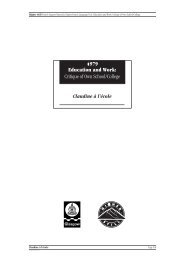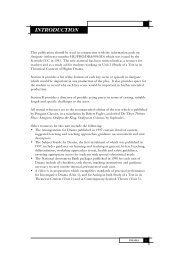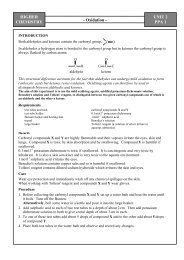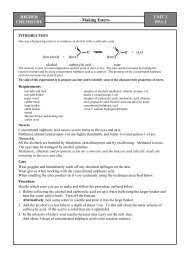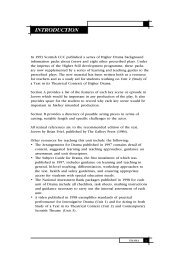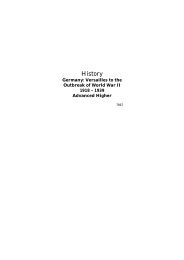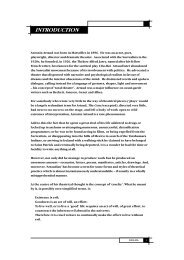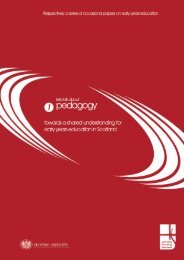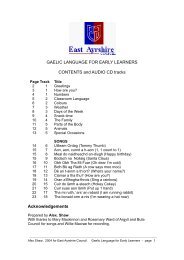Pre-Birth to Three guidance (2.3 - Education Scotland
Pre-Birth to Three guidance (2.3 - Education Scotland
Pre-Birth to Three guidance (2.3 - Education Scotland
You also want an ePaper? Increase the reach of your titles
YUMPU automatically turns print PDFs into web optimized ePapers that Google loves.
46<br />
18 See section on Play<br />
19 See section on Role of Staff<br />
Recording<br />
PRE-BIRTH TO THREE: POSITIVE OUTCOMES FOR SCOTLAND’S CHILDREN AND FAMILIES<br />
OBSERVATION, ASSESSMENT AND PLANNING<br />
Like assessment, recording may be a continuous process throughout<br />
the ‘observation, planning, assessment and implementation’ cycle.<br />
Records generally include observations and information from parents<br />
as well as staff and, where appropriate, children themselves. The<br />
information can be wide-ranging, depending upon the needs of<br />
individual children, and may include significant information relating<br />
<strong>to</strong>, for example, children’s development and learning, social and<br />
emotional wellbeing, likes and interests.<br />
Selecting the most appropriate and effective recording technique<br />
usually depends on the particular focus and purpose of the record<br />
itself and how it is <strong>to</strong> be used. Records may take many forms from<br />
simple note-taking <strong>to</strong> video footage, pictures, pho<strong>to</strong>s or individual<br />
profiles or plans. It is important <strong>to</strong> ensure that any system of recording<br />
respects confidentiality, is manageable and is not <strong>to</strong>o time-consuming.<br />
Effective recording systems lead <strong>to</strong> clear records which take account<br />
of confidentiality but can be accessed readily so that they can be used,<br />
amended, added <strong>to</strong> and shared appropriately.<br />
Planning<br />
Planning is only effective when staff take account of children’s needs,<br />
dispositions, interests and stages of development. Flexible planning<br />
that assists staff <strong>to</strong> be responsive ensures that potentially rich and<br />
meaningful learning opportunities, which have not been planned, are<br />
also recognised and maximised. 18<br />
Building in time <strong>to</strong> ensure that colleagues share observations as they<br />
talk, plan and reflect <strong>to</strong>gether is also central <strong>to</strong> ensuring that provision<br />
for children is consistent, appropriate, caring and motivating.<br />
If overall provision is <strong>to</strong> respond meaningfully <strong>to</strong> the needs of<br />
children, planning needs <strong>to</strong> be informed by observations and regular<br />
assessment, and it has <strong>to</strong> include information from parents and other<br />
relevant professionals. The key person system 19 is extremely valuable<br />
in supporting this approach <strong>to</strong> planning, as the staff who know the<br />
children and families best can ensure that discussions and decisions<br />
about needs and next steps for children are on track.






